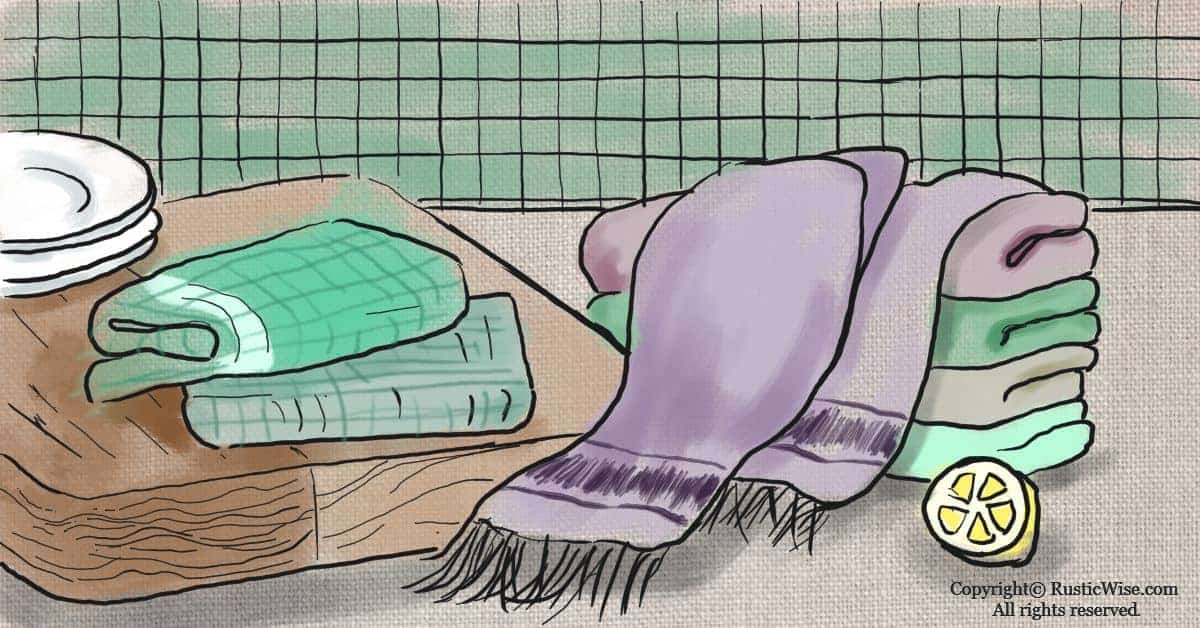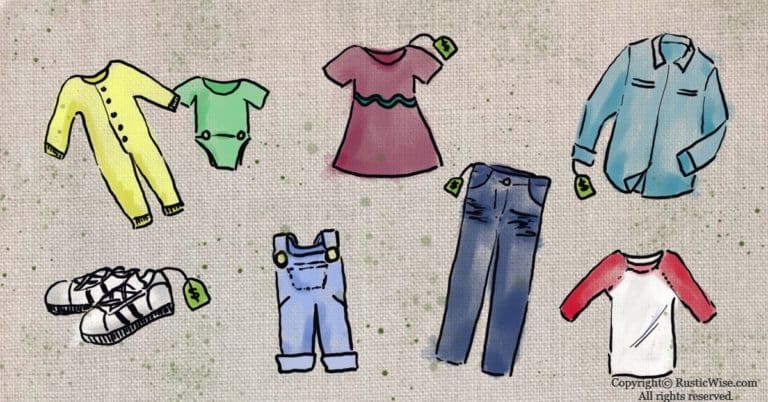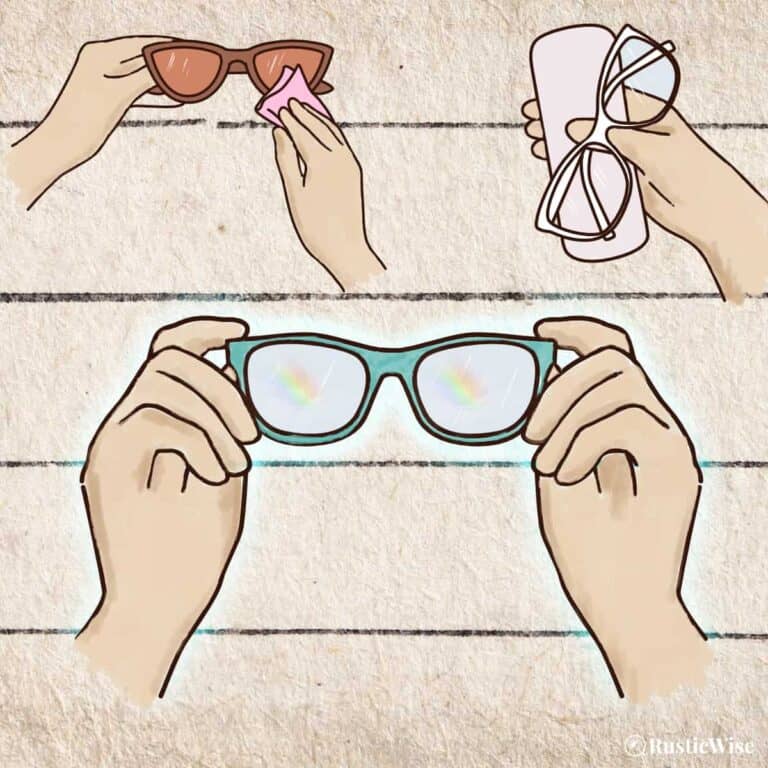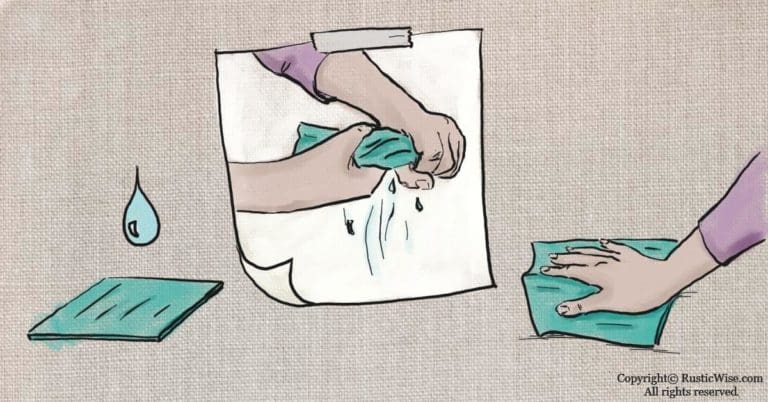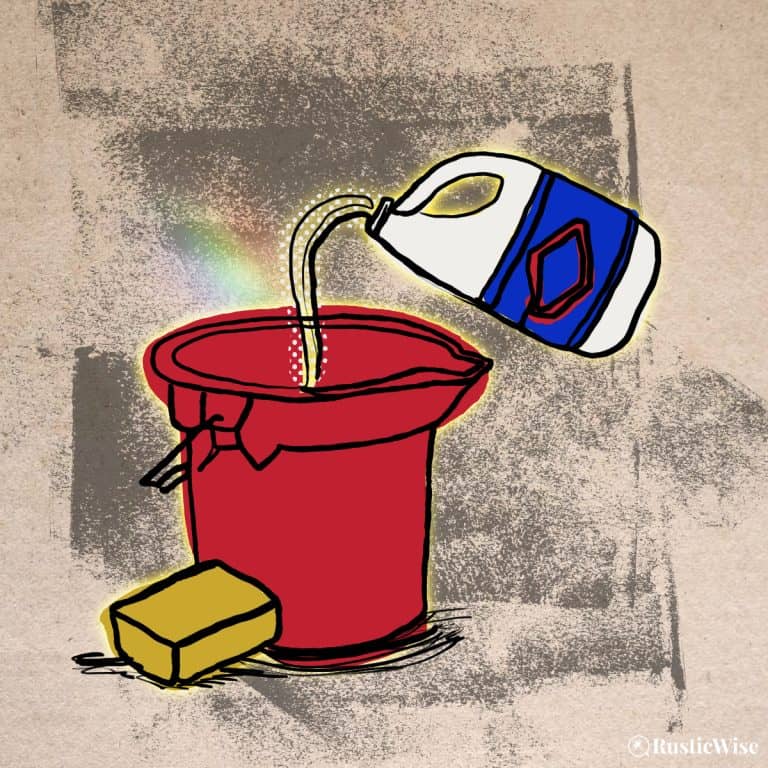How Many Cleaning Cloths Do You Need? Plus Tips on Organizing and Washing Reusable Towels
Whether you’re just making the switch to reusable cleaning cloths, or are in the midst of decluttering, you may be wondering, how many cleaning cloths do you need? There’s really no standard answer to how many cleaning cloths you should have. It really depends on how your cleaning habits, how often you do laundry, the size of the space, and personal cleaning preferences.
We’ll cover how to determine the number of cleaning cloths needed for the kitchen, bathroom, garage, around the house—plus, handy ways to organize them!
Types of reusable cleaning cloths
Having a supply of reusable cleaning towels sure cuts back on paper towel usage—a win-win for the environment and your wallet. With a bit of planning plus a little elbow grease, you’ll be able to keep your house spic and span.
Did you know… Ocean Wise conducted a study in 2019 which found that the average U.S. and Canadian household releases roughly 135 grams (or 533 million microfibers) every year. All-in-all, this adds up to, “the equivalent weight of 10 blue whales.”
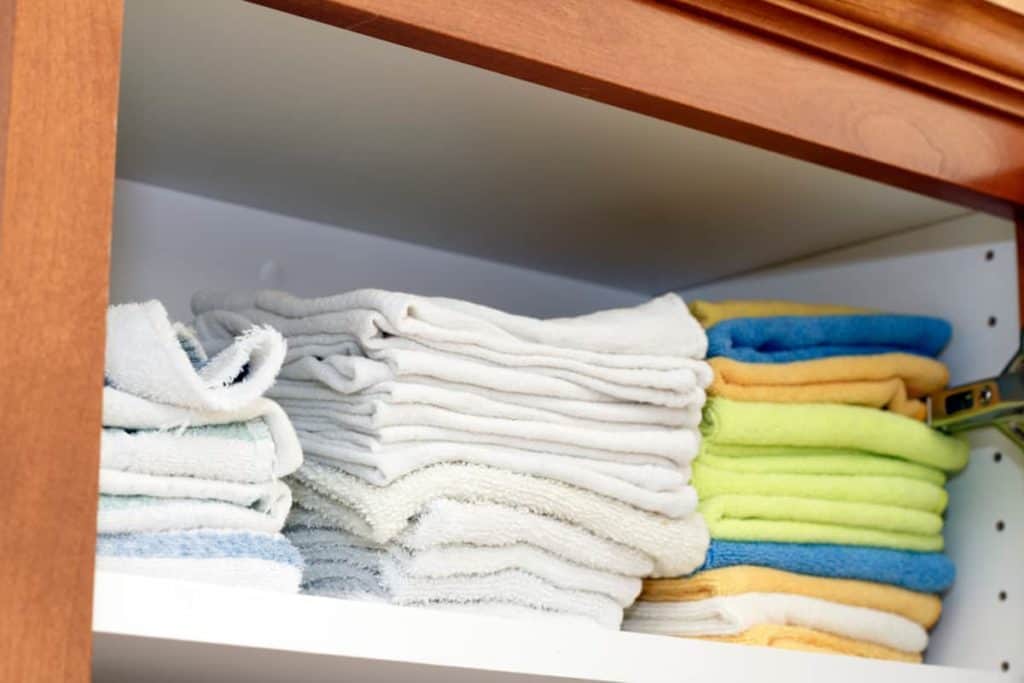
Factors to consider when determining how many cleaning cloths you need
Every household is different. So to come up with a definitive number of cleaning cloths that suits all households is just not going to happen.
Some people run a tight ship, have cleaning routines like clockwork, and like to keep their homes spotless. Others are okay with letting things slide.
Here are a few things to consider when figuring out how many cleaning cloths you need.
How many cleaning cloths do you need? Let’s break it down
Here’s a chart to help you get started on determining exactly how many cleaning cloths you’ll need.
Use this as a starting point and adjust as necessary. For some people, this may seem like way too many cleaning cloths—others may want to add a few more. If you have young children, or pets, add more cleaning cloths!
| Room | Rough estimate on number of cleaning cloths |
|---|---|
| Kitchen (assuming you do laundry 1X week and replace cleaning cloths every 2 days) | Floor: 2 cleaning cloths (one in-use, one for backup) Dishes: 4 drying towels Counters and spills: 4 cleaning cloths Total: 10* *I didn’t include dish washing cloths as some people use a sponge or brush |
| Bathroom (multiply by the number of bathrooms you have) | Floor: 2 cleaning cloths (one in-use, one for backup) Toilet: 2 cleaning cloths Shower/tub: 2 cleaning cloths Counters: 2 cleaning cloths Mirrors: 2 cleaning cloths Total: 10 |
| Around the house | Dusting and general cleaning: 4–10 (depending on the size of your home) Wiping up spills, messes from pets: 4–10 (depending on the number of pets) Total: 8–20 |
How to keep your cleaning cloths organized
If the thought of reusing the same cleaning cloth you used on a toilet (even after it’s washed) on a kitchen countertop grosses you out, you’re not alone.
Here are two different systems you can use to keep different cleaning cloths organized.
Color coded system
If you have multi-colored cleaning cloths, you can implement different color schemes by room. For example, in our home we use green colored cleaning cloths for the kitchen, yellow/orange for bathrooms, and blue for general cleaning and dusting around the house.
Labelling system
If you don’t happen to have different colored cleaning cloths, you could try labelling them (if you don’t mind marking them up with a Sharpie or something similar).
You could try labelling cloths with a letter in the corner. For example:
- “K” for kitchen
- “F” for floors
- “B” for bathrooms
- “T” for toilet
Group similar cloths together
To further avoid mixing up bathroom cloths with kitchen ones, you can try storing them together in a small basket or box.
If you want to get fancy, you could try folding them using the KonMari method.
If you’re not familiar, the KonMari method was invented by cleaning and decluttering guru Marie Kondo who advocates for folding linens so they stand up vertically. The thinking is that this helps you see at-a-glance what towels you have available, and results in tidier shelves and drawers.
- Fold cleaning cloth in half lengthwise.
- Fold the cloth in half again, widthwise.
- Fold the remaining section into thirds by folding one end to the center, and then folding the other end over it (like a flattened roll).
The linen should be able to stand by itself making it easier to take one cleaning cloth out at a time.
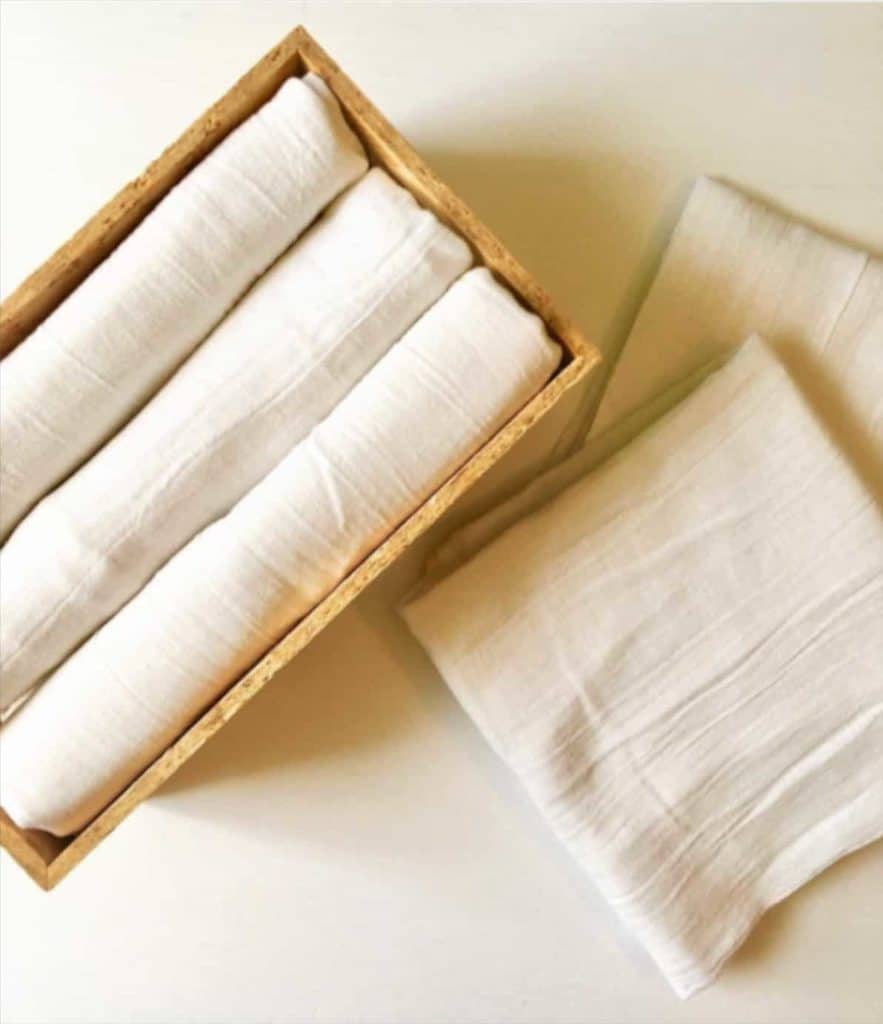
Credit: Marie Kondo (via Instagram)
How often should you wash or replace cleaning cloths?
A common occurrence in the kitchen is cross-contamination between surfaces, particularly when wiping up surfaces that have come in contact with raw meat, seafood, or poultry. Foodborne pathogens such as campylobacter, E. coli, listeria, salmonella, and staphylococcus may linger on the surface of cleaning cloths and work surfaces long after you’ve rinsed them.
Always wash (or replace) a cleaning cloth after you’ve used it to clean up raw meat items.
While there’s no hard rule when it comes to how often to clean kitchen dishcloths, a good rule of thumb is to wash (or replace) at least every 2 days.
Tips on washing and disinfecting cleaning cloths
If your cleaning cloths or sponges have developed a funky smell, you’ve waited too long before washing! A strong odor indicates the presence of potentially harmful bacteria growing, so it’s important to wash cleaning cloths frequently.
Tip: Avoid using fabric softener when washing cleaning cloths, dishcloths, and other towels. Over time, fabric softener makes many textiles less absorbent. Besides, fabric softener is chock-full of harsh chemicals. For a natural and budget-friendly way to soften and fluff up fabrics, read up on how to use vinegar for laundry.
Sponges or Swedish dishcloths
The easiest way to disinfect kitchen sponges or Swedish dishcloths is to throw them on the top rack of the dishwasher and run a hot wash cycle. If you have a hot drying cycle, use this for your sponges (but not on your Swedish dishcloths which may shrink under high heat). Check out other ways to disinfect Swedish dishcloths and sponges.
Dishcloths
It’s important to wash your dishcloths and towels on the HOT cycle of your washer to ensure any bacteria is killed. If you have a “sanitize” cycle, this works great. Finish off by ensuring they dry on high to further disinfect.
Microfiber cleaning cloths
We mentioned above that microfiber cloths while handy, also release plastic microfibers into our waterways. To minimize this, the U.S. Environmental Protection Agency (EPA) has a few recommendations:
- Do fewer wash cycles. While we’re not advocating you to let your microfiber cloth become filthy, it doesn’t always need washing, especially if you’re just doing some light dusting or other similar cleaning task.
- Wash in colder water on a shorter setting to prevent microfibers from shedding.
- Wash with full loads of laundry. Not only is this more water and energy efficient, it also creates less friction and less loss of microfibers.
- Use a front-loading washing machine which tends to reduce the number of microfibers released.
- Install an external microfiber filter which catches many microfibers before they can enter waterways.
Related questions
Is it okay to use the same cleaning cloth to clean the entire house?
Hmm…that depends. You probably don’t want to use the same cleaning cloth for cleaning your bathroom AND cleaning your kitchen. You could probably get away with using the same cloth for the entire house if you’re just doing some light dusting. Use your judgment.
What to do with old ratty towels?
Before you decide to toss out old holey towels, consider using them for other purposes.
- Use them around the garden or garage (because there’s always a mess or two to clean up).
- Use to dry off your vehicle (provided the cloth is soft and lint-free).
- Use as bedding for pets.

References
- Ocean Wise, New Report: Canadian and US Laundry Releases Trillions of Plastic Microfibers into the Ocean, (Released 10 October 10 2019). Accessed June 2021.
- Michigan State University, Keep your sponges and dish cloths bacteria-free this summer, https://www.canr.msu.edu/news/keep_your_sponges_and_dish_cloths_bacteria_free_this_summer. Accessed June 2021.
- U.S. Environmental Protection Agency (EPA), What You Should Know About Microfiber Pollution, https://www.epa.gov/sites/production/files/2020-08/documents/article_2_microfibers_formatted.pdf. Accessed June 2021.

Author: Theresa Tesolin
Theresa is co-founder of RusticWise. She helps people unleash their inner DIY spirit by encouraging them to get dirty and make or grow something from scratch.

